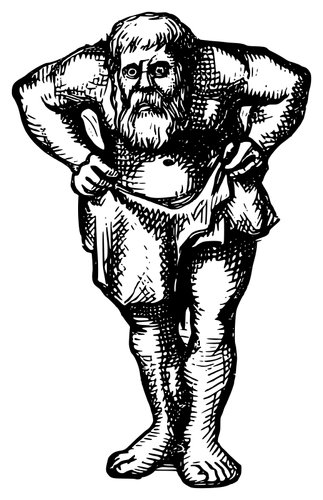A Google Maps React library. Written because I was dissatisfied with fullstackreact/google-maps-react. Will have focus on minimal rerenders, and trying to rely as much as possible on the Google Maps Javascript API (v3).
google.maps.LatLngLiteralis just an object of type{ lat: number, lng: number }
yarn add reactive-atlasFirst of all, you have to setup the global API provider. This is required by the library to work. I recommend you wrap the highest common component of all components that require access to the map with this.
import { GoogleAPIProvider } from "reactive-atlas";
const Root: React.FC = props => (
<GoogleAPIProvider apiKey="API_KEY">{props.children}</GoogleAPIProvider>
);This is a hook that returns a google object containing all the methods
exposed to us. Has to be used in a component that is a child of
GoogleAPIProvider;
import { useGoogle } from "reactive-atlas";
const ComponentThatUsesGoogleAPI: React.FC = props => {
const google = useGoogle();
// ...
};The map is the most important object. It has to be a child (though not
direct) of GoogleAPIProvider.
The required options are zoom and center. A number (0-18 inclusive),
and google.maps.LatLng or google.maps.LatLngLiteral, respectively.
import { Map, useGoogle } from "reactive-atlas";
const Globus = () => {
const google = useGoogle();
return <Map options={{ zoom: 8, center: new google.maps.LatLng(1, 2) }} />;
};All Markers and other elements should be children of a map, and you should not nest Maps.
The marker is a common object in maps. It has to be a child of a Map.
import { Map, Marker, useGoogle } from "reactive-atlas";
const Globus = () => {
const google = useGoogle();
return (
<Map options={{ zoom: 8, center: new google.maps.LatLng(1, 2) }}>
<Marker
options={{
position: new google.maps.LatLng(63, 10),
title: "Hello, World!",
label: "B"
}}
/>
</Map>
);
};The InfoWindow can be handy if you want to display extra information about e.g. a Marker.
import { InfoWindow, Marker, Map, useGoogle } from "reactive-atlas";
const IWExample = () => {
const ref = React.useRef<Marker>();
const [open, setOpen] = React.useState(false);
return (
<Map options={{ zoom: 8, center: new google.maps.LatLng(1, 2) }}>
<Marker
ref={ref}
options={{
position: new google.maps.LatLng(63, 10),
title: "Hello, World!",
label: "B"
}}
eventHandlers={[["click", () => setOpen(o => !o)]]}
/>
<InfoWindow
open={open}
setOpen={setOpen}
anchor={() => ref.current.marker}
>
<p>Hello, World!</p>
</InfoWindow>
</Map>
);
};As you can see, you can pass a ref to the Marker, and later get out the
underlying marker property.
Exactly the same usage as Marker.
Required option keys are radius: number, and center: google.maps.LatLng | google.maps.LatLngLiteral.
import { Map, Circle, useGoogle } from "reactive-atlas";
const Globus = () => {
const google = useGoogle();
return (
<Map options={{ zoom: 8, center: new google.maps.LatLng(1, 2) }}>
<Circle
options={{
center: new google.maps.LatLng(63, 10),
radius: 128000
}}
/>
</Map>
);
};First you have to wrap it in a Provider and Map of course.
Create an event handler which simply prints the new location and radius.
const circleChangePosRadius = circle =>
console.log(
`Circle is at ${circle
.getCenter()
.toString()} with radius ${circle.getRadius()}.`
);Wire it up to print pos/radius every time the radius or center changes.
<Circle
options={{
editable: true,
radius: 100000,
center: new google.maps.LatLng(63, 10)
}}
eventHandlers={[
["radius_changed", circleChangePosRadius],
["center_changed", circleChangePosRadius]
]}
/>The same principles would be used when making a Marker draggable; just
replace radius_changed/center_changed with dragend.
To retain as much of the original code as possible from the google API, I've
decided to opt for a bit strange event handling. Instead of doing like
google-maps-react (the reason I'm making this library) and using "standard"
HTML-like handlers (i.e. onCenter_changed (the weird combination of
camelCase and snake_case is because google uses snake-case, and HTML uses
camelCase)), I've opted to use a list of event handlers you'd like to attach
to the element. This property can be used on Map, Marker, and Circle
(as of now).
To remove an event handler, simply remove the entry from the array of handlers, and the library will remove the listener. It will also clean up all listeners when unmounting.
The first parameter in the callback function is the object you're operating on, so in the next example, it's a marker, but if you were to add a listener to a circle, it would be the circle. This allows you to operate directly on the google API, which might be desirable.
The second parameter is a list with one of the following;
- Nothing, i.e.
[] undefined, i.e.[undefined]- The event (e.g.
MouseEvent), i.e.[MouseEvent]
This is a bit strange, but it works quite well. I believe it was intended for possible expansion, so that you could pass more than one event.
import { Map, Marker, useGoogle } from "reactive-atlas";
const Globus = () => {
const google = useGoogle();
return (
<Map options={{ zoom: 8, center: new google.maps.LatLng(1, 2) }}>
<Marker
options={{
position: new google.maps.LatLng(pos, pos)
}}
eventHandlers={[
[
"click",
(marker, evt) => {
// Make it jump!
marker.setAnimation(google.maps.Animation.BOUNCE);
setTimeout(() => marker.setAnimation(null), 500);
}
]
]}
/>
</Map>
);
};Often times, you want to specify the bounds of the place you want to see.
You can do this using the bounds prop on Map. Simply send in a
google.maps.LatLngBounds | google.maps.LatLngBoundsLiteral object, and it
will scale to that area. If you change the bounds, the map will fit to the
new area and pan there.
For now, there isn't really much styling on the map. It's container is set to
flex-grow: 1, which means that you should try to use flex to control the
positioning.
MIT © fredrikaugust



